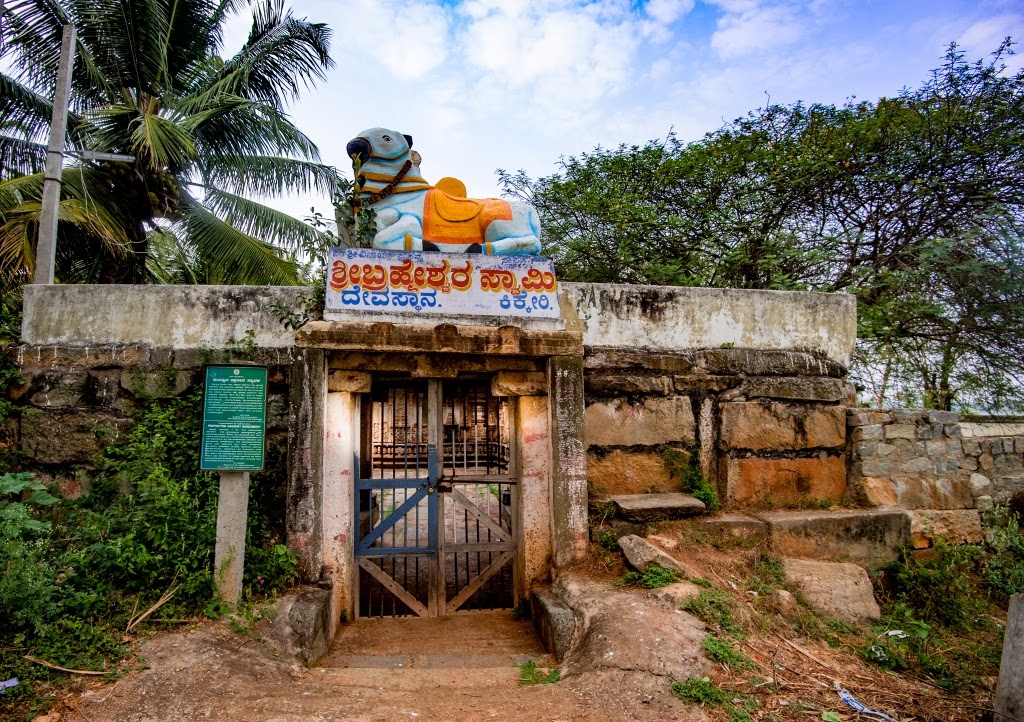Kikkeri Sri Brahmeshvara Temple, Karnataka

Address
Kikkeri Sri Brahmeshvara Temple, Kikkeri, Mandya District, Karnataka 571423
Diety
Sri Brahmeshvara
Introduction
The Brahmeshvara Temple, also known as the Brahmeshwara or Brahmesvara Temple, is a remarkable 12th-century temple showcasing Hoysala architecture in the village of Kikkeri, located in the Mandya district of Karnataka, India.
Location: The Brahmeshvara Temple is situated in the village of Kikkeri, which is located in the Mandya district of Karnataka, India.
Architecture: The temple is renowned for its stunning Hoysala architecture, characteristic of this region. It reflects the rich artistic and architectural traditions of the Hoysala dynasty.
Dedication: The temple is dedicated to Lord Shiva (Brahmesvara), and it is notable for integrating various traditions of Hinduism, including Shaivism, Vaishnavism, and Shaktism, along with Vedic deities.
Historical Significance: The origins of Kikkeri are associated with an oral tradition that suggests a tribal chief named Keeka settled there after making an arrangement with the king. This resulted in the construction of the original Malleswara temple. Over time, this temple experienced constant waterlogging, leading to the later construction of the Brahmeshvara Temple in the 12th century. An inscription from the 11th century mentions gifts to Brahmesvara by Hoysala kings, linking the temple to the Yadava-kula dynasty.
Structure: The temple comprises several sections, including Mukhmandapa (entrance hall), Ardhmandapa (half hall), Rangmandapa (colorful hall), Antarala (vestibule), and Garbhagriha (sanctum sanctorum). One of the unique features of the temple is that it does not have a raised platform (jagati) and is directly set on the ground.
Vimana: The superstructure (vimana) of the temple is tritala (three-storied) and is designed with intricate architecture. It features a large amalaka, kalasa (decorative water-pot at the apex of the dome), and the Hoysala crest on top of the sukhanasi.
Mandapa: The Navaranga mandapa stands out with its unique design. It combines features of both gudha-type hall architecture and rangamandapa. The mandapa has four large Srikara-type pillars with elegant putrika-type brackets, which are sculpted with South Indian classical dance postures.
Inner Artwork: Inside the temple, there are niches containing statues representing Shaivism, Vaishnavism, and Shaktism. These include depictions of deities like Ganesha, Durga, Kartikeya, Shiva, Vishnu, and more. Notably, the ceiling of the mandapa features panels with depictions of directional deities and planetary symbolism.
Devi Shrine: Adjacent to the main temple, there is a smaller Devi shrine built in the early 13th century, known for its intricate pilasters.
Inscriptions: The temple has several inscriptions that provide valuable historical and socio-political information. Some of these inscriptions date back to the 12th and 13th centuries and highlight the significance of the temple in its time.
The Brahmeshvara Temple is not only an architectural marvel but also an important historical and cultural site, reflecting the rich heritage of the region. It is a testament to the religious and artistic diversity of the Hoysala dynasty.
Century/Period/Age
12th century.
Managed By
Archaeological Survey of India (ASI)
Nearest Bus Station
Kikkeri
Nearest Railway Station
Srirangapatna Station
Nearest Airport
Bengaluru, Mysore









